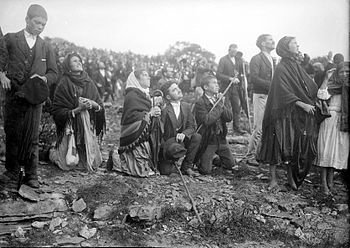
BL. JERZY POPIELUSZKO, PRIEST - 19th OCTOBER
~thread~
1. Blessed Jerzy was born in 1947 in Okopy in Eastern Poland. After finishing at his secondary school Blessed Jerzy entered the seminary at Warsaw. After ordination to the priesthood
#JerzyPopieluszko #Christian #martyr
~thread~
1. Blessed Jerzy was born in 1947 in Okopy in Eastern Poland. After finishing at his secondary school Blessed Jerzy entered the seminary at Warsaw. After ordination to the priesthood
#JerzyPopieluszko #Christian #martyr

2. He worked at the parish of St Stanislas Kostka in Warsaw.
Bl. Jerzy was asked to organise the medical teams during the visit of Pope John Paul II to Poland and Warsaw.
On 13th December 1981, the communist authorities imposed martial law,
Bl. Jerzy was asked to organise the medical teams during the visit of Pope John Paul II to Poland and Warsaw.
On 13th December 1981, the communist authorities imposed martial law,
3. arresting many Solidarity activists. Bl. Jerzy became an important focus in a welfare programme to support families affected by martial law. He regularly attended trials of Solidarity activists, sitting with their families, so that the prisoners knew they were not forgotten.
4. It was in the courtroom that Bl. Jerzy had the idea of celebrating a monthly Mass for the Country and those imprisoned.
These Masses were not to be political demonstrations, but peaceful occasions with no slogans. Bl. Jerzy was neither a social or political activist
These Masses were not to be political demonstrations, but peaceful occasions with no slogans. Bl. Jerzy was neither a social or political activist
5. but a Catholic priest faithful to the Gospel of Jesus. The communists saw Bl. Jerzy as an enemy.
On 19th October 1984, Bl. Jerzy was kidnapped by security agents on his way back to Warsaw. He was savagely beaten, and his body was tied in such a way
#Catholic #Christian
On 19th October 1984, Bl. Jerzy was kidnapped by security agents on his way back to Warsaw. He was savagely beaten, and his body was tied in such a way
#Catholic #Christian
6. that he would strangle himself by moving. His weighted body was then thrown into a deep reservoir. His killers carried out their task in such a brutal way, showing their hatred for the priest and the Catholic faith.
On 30th October Bl. Jerzy’s body was found in the freezing
On 30th October Bl. Jerzy’s body was found in the freezing
7. waters of a reservoir near Wloclawek. Bl. Jerzy’s Funeral Mass was attended by over 400.000 people. Over 17 million people have visited his tomb.
Pope Benedict said at his Beatification Mass in June 2010 that
Pope Benedict said at his Beatification Mass in June 2010 that
8. Blessed Jerzy’s “zealous service and his martyrdom are a special sign of the victory of good over evil. May his example and his intercession nourish the zeal of priests and enkindle the faithful with love”.
@threadreaderapp, unroll please.
• • •
Missing some Tweet in this thread? You can try to
force a refresh








